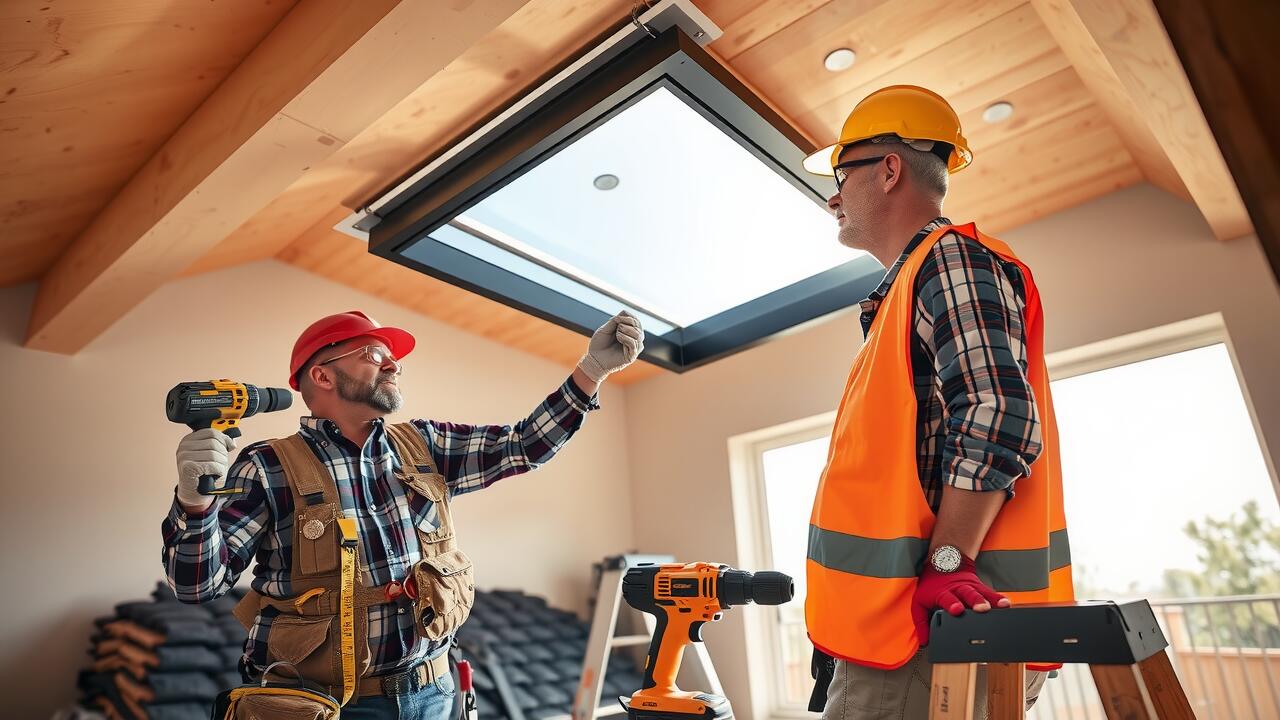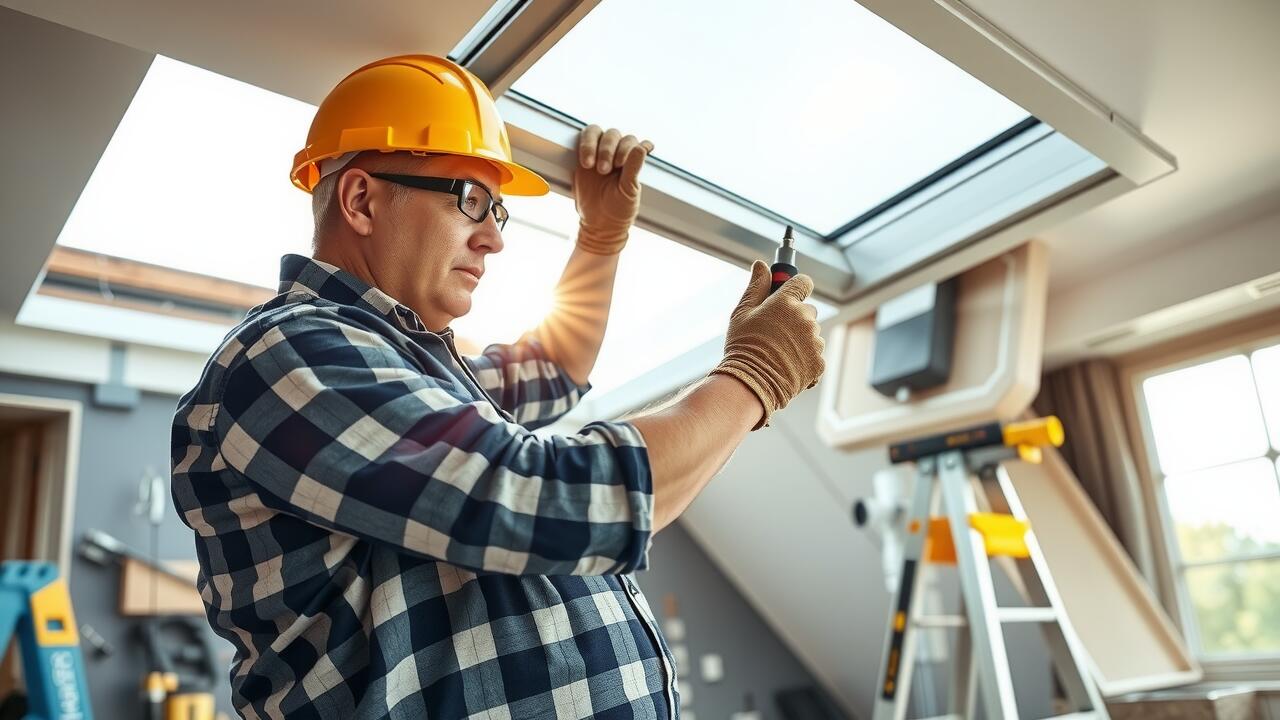
Materials for New Skylights
When considering skylight replacement, selecting the right materials is essential for ensuring durability and performance. Common materials used in skylights include glass and acrylic, each offering distinct advantages. Glass provides a higher level of resistance to scratching and yellowing over time, making it a favourite among homeowners seeking longevity. On the other hand, acrylic is lighter and often more affordable, which can appeal to those on a tighter budget while still delivering decent insulation and light transmission.
The choice between these materials may also depend on specific needs and preferences. Glass skylights can be manufactured with additional coatings to enhance energy efficiency and UV resistance, while acrylic options might be easier to install due to their lightweight nature. As part of the skylight replacement process, it’s crucial to consider not only aesthetic preferences but also how the chosen material will perform in terms of weather resistance and thermal insulation in the Canadian climate.
Comparing Glass and Acrylic Options
When considering skylight replacement, the choice between glass and acrylic plays a significant role in performance and aesthetics. Glass skylights typically offer superior durability and resistance to scratching, making them a long-lasting option. Their ability to maintain clarity over time is particularly appealing for those who want to maximise the natural light entering their spaces. Additionally, glass can be treated with various coatings to enhance thermal insulation and UV protection, ensuring a comfortable indoor environment.
On the other hand, acrylic skylights present a lighter and often more affordable alternative. They provide excellent light transmission and are less prone to shattering compared to glass. However, acrylic may be more susceptible to scratches and yellowing over time. This difference in longevity and maintenance should be a crucial factor to consider when planning skylight replacement, especially in regions that experience extreme weather conditions. Homeowners should weigh these characteristics carefully to determine which material best suits their needs.
Benefits of Replacing Skylights
Replacing skylights can significantly enhance the aesthetic appeal of a room. New skylights often feature improved designs and materials, which provide a more modern look and better performance. Homeowners frequently report increased satisfaction with the amount of natural light that floods their spaces after a skylight replacement. This upgrade not only brightens the interior but also contributes to a more inviting atmosphere.
Energy efficiency is another key benefit of skylight replacement. Modern skylight options are designed with advanced insulation and UV protection, helping to reduce heat loss in winter and heat gain in summer. This can lead to lower energy bills and a more comfortable living environment. An improved design also minimises the risk of leaks and other issues associated with older skylights, enhancing the overall longevity of the installation.
Enhancing Natural Light and Energy Efficiency
Skylight replacement significantly boosts the amount of natural light entering a space, transforming dim rooms into vibrant areas. This influx of daylight not only enhances the visual appeal of a home but also contributes to an uplifting atmosphere. Families often find that more natural light leads to improved mood and productivity. Strategically placed skylights can illuminate spaces that conventional windows cannot easily reach, ensuring that every corner of your home benefits from sunlight.
In addition to improving light quality, skylight replacement can enhance energy efficiency. Modern skylights typically come equipped with advanced glazing options that provide better insulation. This prevents heat loss during colder months while keeping interiors cool during the summer. Homeowners may notice a reduction in heating and cooling costs due to the energy-efficient features of new skylights. By optimising natural light and energy use, replacing skylights contributes to a more sustainable living environment.
Potential Challenges in Replacement
Skylight replacement can present several challenges that homeowners must carefully consider before initiating the project. One significant concern is the potential for damage to the existing roof structure. During the removal of the old skylight, there’s a risk of inadvertently compromising the surrounding shingles or flashing, which could lead to leaks or other roofing issues. Proper techniques and precautions are vital to ensure that the integrity of the roof remains intact throughout the process.
Another challenge lies in matching the new skylights to the existing roof aesthetics and structure. Variances in materials, styles, and colours can create a noticeable difference, detracting from the overall appearance of the home. It is essential to select skylights that not only fit well but also complement the surrounding roofing elements. Homeowners may need to invest time in research and possibly consult professionals to ensure a seamless integration during skylight replacement.
Avoiding Damage to Your Roof Structure
When considering skylight replacement, it’s essential to approach the task methodically to prevent damage to your roof structure. Begin by assessing the existing condition of the skylights and surrounding roofing material. This preliminary evaluation will help identify areas that might require extra care during the installation process. It’s important to execute any removal and installation work carefully to avoid creating new leaks or compromising the integrity of the roofing system.
Using quality flashing and sealant is crucial in maintaining the roof’s durability following skylight replacement. Inadequate sealing can lead to moisture ingress, potentially resulting in significant structural issues over time. It’s advisable to engage a professional who understands the intricacies involved in this type of work. Proper technique not only ensures optimal function and aesthetic appeal but also safeguards the underlying structure of your roof.
FAQS
Can I replace skylights without having to replace my entire roof?
Yes, it is possible to replace skylights without replacing the entire roof. However, it is essential to ensure that the existing roof structure is in good condition and capable of supporting the new skylights.
What materials are available for new skylights?
Common materials for new skylights include glass and acrylic. Each material has its own benefits and drawbacks, such as durability, insulation properties, and aesthetic appeal.
What are the advantages of replacing skylights?
Replacing skylights can enhance natural light in your home, improve energy efficiency, and potentially increase the overall value of your property. New skylights can also eliminate leaks and reduce maintenance issues associated with older models.
Are there any challenges when replacing skylights?
Yes, potential challenges include ensuring a proper fit, avoiding damage to your roof structure, and dealing with any additional repairs that may be necessary if the existing roof is compromised.
How can I ensure that my roof structure remains undamaged during skylight replacement?
To avoid damage, it is advisable to hire a professional contractor who is experienced in skylight installation. They will have the expertise to carefully remove the old skylight and install the new one without compromising the integrity of your roof.
